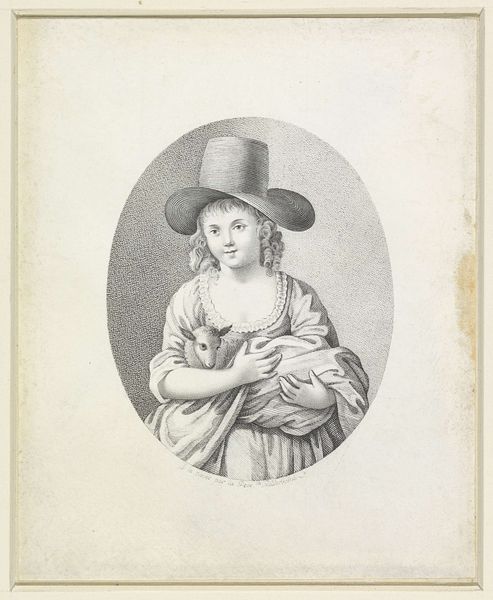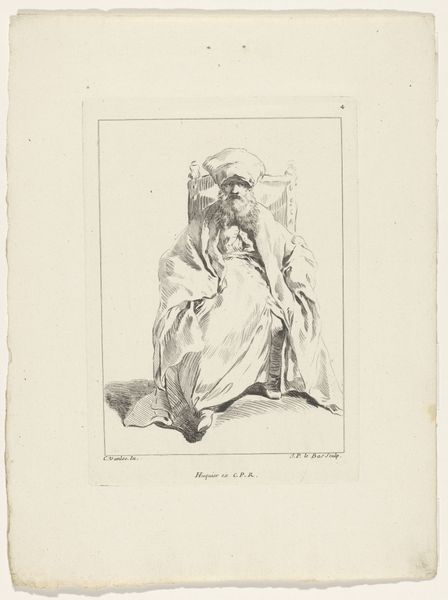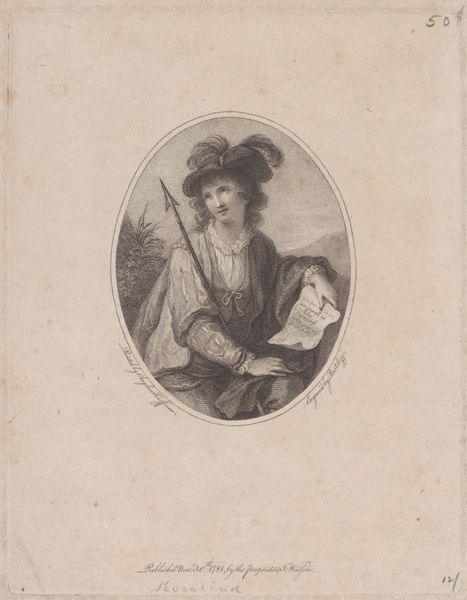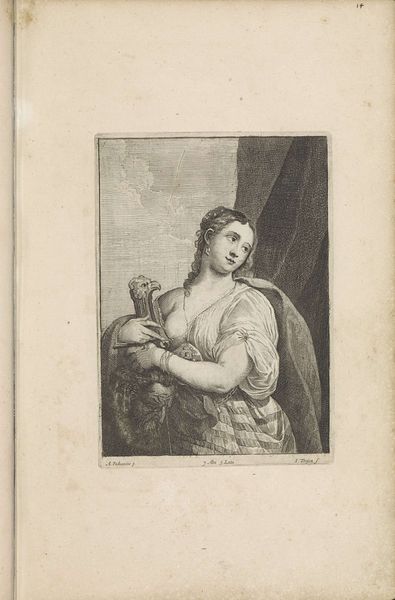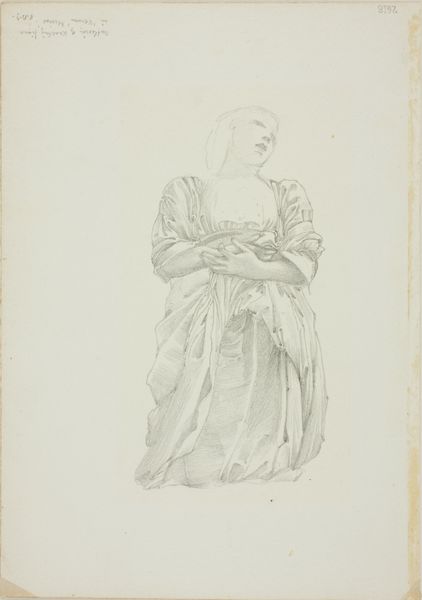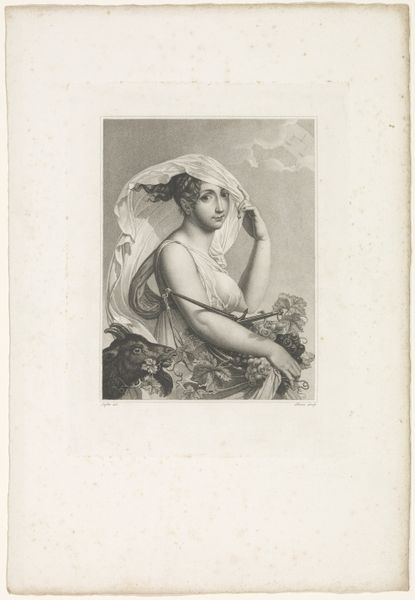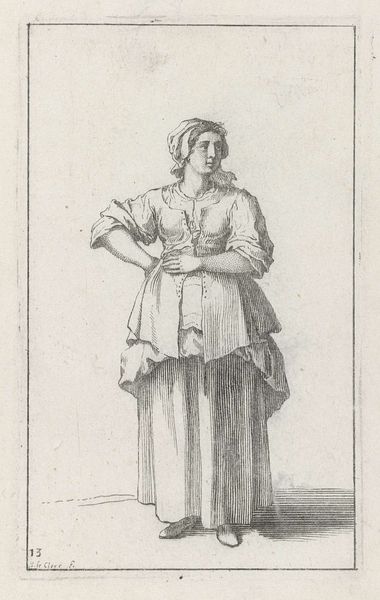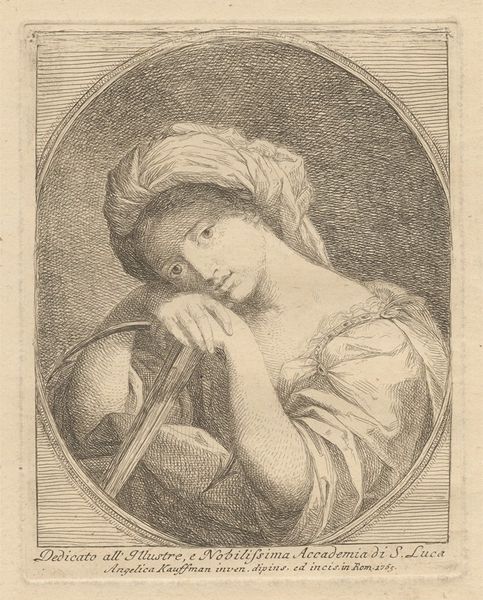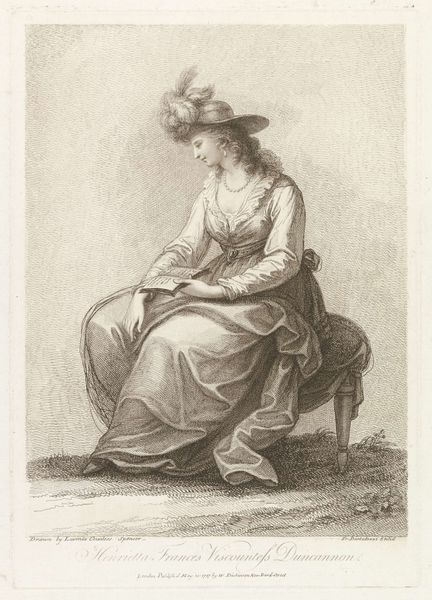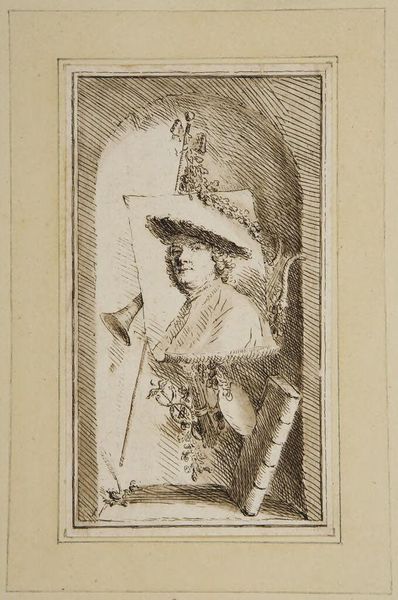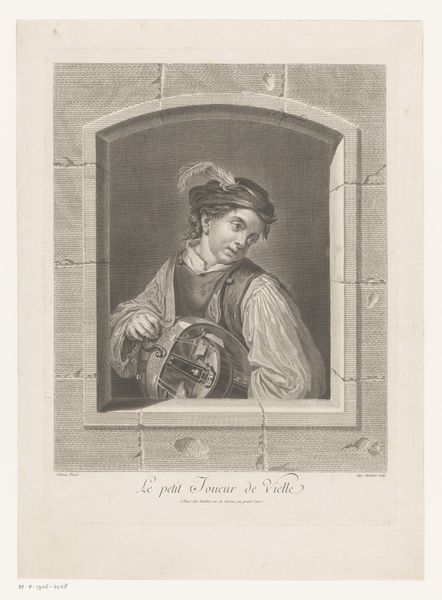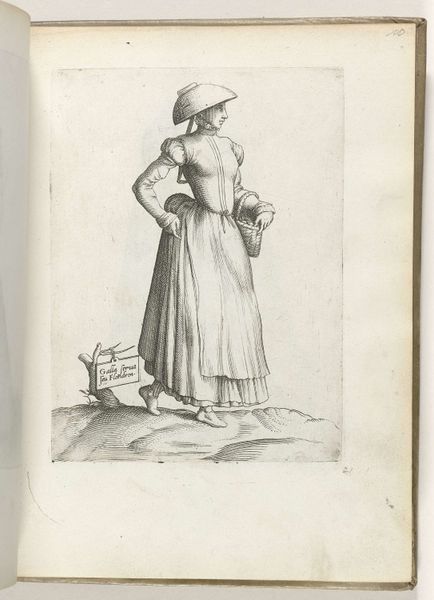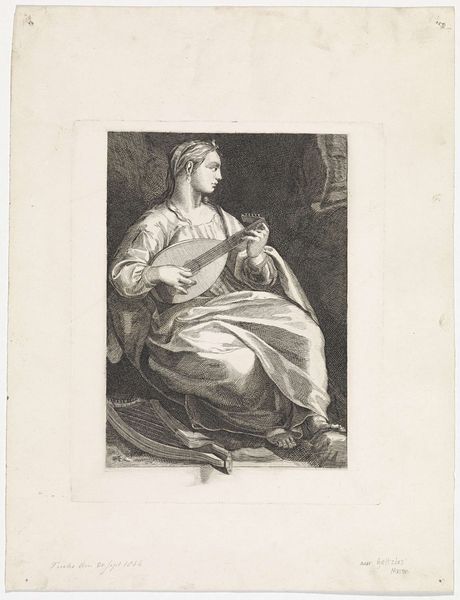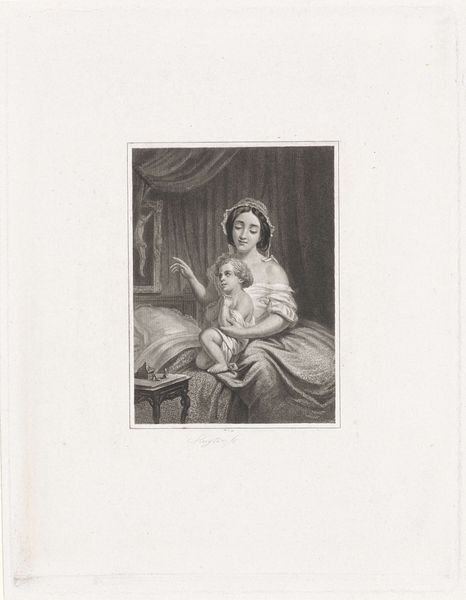
Dimensions: height 162 mm, width 133 mm
Copyright: Rijks Museum: Open Domain
Curator: Françoise Jeanne Ridderbosch's engraving, "Herder met hond in ovaal," roughly translated as "Shepherd with dog in oval", created between 1764 and 1837, presents a serene, pastoral scene. Editor: My first thought is just how meticulously detailed this is. The soft shading created with seemingly endless tiny lines—it gives the whole image an almost dreamlike quality. Curator: Indeed. As an engraving, the process involves meticulous carving into a metal plate. We see that craftsmanship translated into the fine textures, capturing not only the scene but also providing a visual record of labor and the demanding skills of the engraver. The labor, the specific tools, and even the type of metal used would impact the aesthetic of the final product. Editor: Placing this piece within its historical context reveals some interesting tension. We see a romanticized version of rural life here, the shepherd appearing rather dignified despite the modest clothing, almost posed within a portrait, yet also suggestive of a burgeoning interest in the lives of everyday working people. It raises questions about social hierarchies and idealized roles. Who were such works meant to reach, and what stories did these visuals convey about labour and identity in the 18th century? Curator: The very fact that such an image could be reproduced through engraving made art accessible to a broader audience. Each print a commodity itself circulating these notions about nature, class and taste, shaping broader social imaginaries. Editor: And I notice the presence of the dog is striking. The bond between humans and animals represented here speaks volumes about interspecies relations at the time. A worker represented with his tools including the canine companion seems like an explicit narrative of caregiving labour in a particular setting. Curator: Certainly, a potent reminder that the aesthetic value of the piece cannot be divorced from its material existence, its creation as an object of labor. Considering what makes up its tangible presence gives depth and complexity to even the most straightforward representational pieces. Editor: Exactly, thinking about the audience receiving it then but looking through our lens of race, gender and class helps challenge romantic and exclusionary themes in idealized pastoral art, opening space for more equitable narratives. Curator: Seeing it this way invites us to connect with art and recognize its presence in the fabric of social experiences throughout history. Editor: Agreed. Now, it inspires reflection of narratives within artistic creations that either reproduce inequalities or begin a critical dialogue regarding it.
Comments
No comments
Be the first to comment and join the conversation on the ultimate creative platform.
